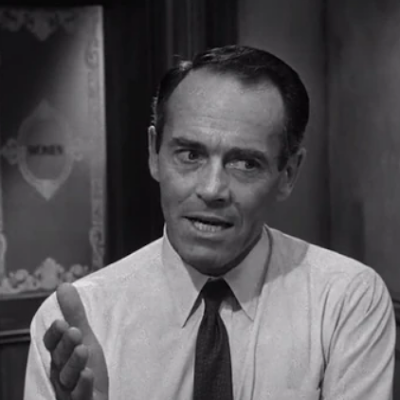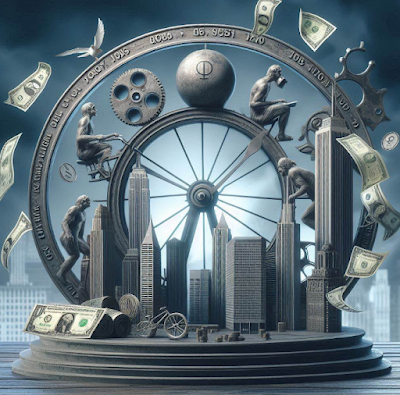Summary:
Perceptions of two trends shape the investment climate: reflation and nationalism.
Fed rate hike set for next month, barring significant surprise.
Japan’s trade surplus is growing even as imports and exports continue to contract.
United StatesAround the middle of the year, St. Louis Federal Reserve President James Bullard revealed his new economic approach. He argued that during economic phases, or paradigms, economic relationships wee fairly stable, such as unemployment and inflation. We cannot predict when a new paradigm emerges. Economic forecasts must assume the continuation of whatever is the current paradigm. Bullard accepts the need for one more interest rate, perhaps next month to bring the Fed funds to a neutral target within the existing set of economic relationships. Investors see two trends which could very well portend a changing paradigm. First is reflation. It was clear that whichever candidate won the US presidential election, fiscal policy was set to turn more accommodative. Trump promised a large stimulus package, which included tax cuts as well as spending increases. The size of the package he talked about during the campaign, and his economic advisers are maintaining after the election, is on par with the February 2009 measures when the economy was in the throes of the credit-crisis-induced recession. The limits of monetary policy were gradually becoming recognized and emphasized by economists and policymakers. A few countries, such as Canada, led by a new Liberal government, provided modest fiscal support. The UK is also widely expected to increase government spending. Investors anticipate that Hammond, the UK Chancellor the Exchequer, will outline an increase in infrastructure investment (rail and roads) in the Autumn Statement on November 23. Trump’s campaign rhetoric stands out for its size and the fact that it is for a US economy that is already growing near trend, which the Federal Reserve estimates near 1.8%. The inflationary implications of provided significant stimulus under such pre-existing conditions are not lost on investors. The Federal Reserve was poised to hike rates next month regardless of the electoral outcome. The recent string of data and officials comments, including by the doves such as Governor Tarullo and Chicago President Evans give the impression of a broad consensus to raise rates. The high frequency data includes existing and new house sales, durable goods orders, and the preliminary trade balance. They may be important for Q4 GDP estimates, but barring a significant downside surprise, investors are likely to continue to anticipate a hike in the Fed funds target rate next month. The minutes from the recent FOMC meeting have been superseded by events, and it will be difficult for the market to price in a much greater chance of a Fed hike. The dollar has risen sharply this month, but it comes amid investor’s repricing the odds of a rate hike and political uncertainty. While officials, like many investors, prefer less dramatic moves, the general direction may not be so disagreeable. |
Economic Events: United States, Week November 21 |
United KingdomThe other trend is toward nationalism and away from globalism, or integration. The UK decision (by a slight majority) to leave the EU and the election of the populist-right Trump as US president (where he secured the necessary electoral college votes but did not the most popular votes) are the first two steps on the trend, with the focus turning to Europe. For various reasons, beyond the scope of this note, polls appear to have failed in capturing the strength of nationalism and support for populist-right positions. |
Economic Events: United Kingdom, Week November 21 |
EurozoneWe have long argued Europe was a man-made construct more than a geographic entity defined by Nature. Monetary union was similarly a political construct and was designed to cope with the reunification of Germany. We were able to help navigate the troubled waters when many thought that a Greek exit was imminent by appreciating the significance of political considerations, including will. The trend toward nationalism, if that is what it is, questions precisely that political will. The immediate focus is on the Italian referendum on the size and function of the Senate, and secondarily the Austria’s presidential election the same day, December 4. Italian Prime Minister Renzi has pushed through reforms of the lower house, the Chamber of Deputies earlier this year. Next month’s referendum would complete the process and set the stage for the 2018 national elections. However, the referendum is likely to lose. Renzi’s overplayed the commitment to reform by threatening to resign if the referendum did not win. He backed away from it, but most recently he has again played up this possibility. If the referendum loses, many expect Renzi to reshuffle his Cabinet. Renzi seemed to be warning his critics within the governing PD party that he will not accept leading caretaker government. He would resign, he says. A fractured PD, coupled with an already fragmented center/right, would increase the chances of the second largest political party, the anti-EU 5-Star Movement, which captured the city governments of Rome and Turin earlier this year. Beyond Italy, some investors are looking a little further down field. Next year, the French presidential election in the spring is even a larger prize for the populist-right. Le Pen is running a strong campaign while Hollande’s single digit support undermines the credibility of the Socialists. The uninspiring center-right Republicans will have to depend on the left’s antipathy toward the populist right to overcome the National Front’s challenge. The economic or the political impulse in and of themselves may signal a new paradigm, but together, they are a potent force. Despite significant purchases by the ECB and the BOJ, bond yields appear to have bottomed. Deflationary forces in most countries have been arrested. Bond yields have been falling since the early-1980s. This trend may be over. That is what is at stake. We may have entered a new paradigm. The flash eurozone PMI will not distract from the evolving political situation in Italy, Austria, and the implications of the rise in yields. The rise in yields is seen a helpful for many banks. The high-level concern about Deutsche Bank a few months ago has eased, and share prices have appreciated by more than 50% since the end September. An index of EMU banks initially rallied 10% after the US election, but have given back around 60% of those gains. In aggregate, European growth is near steady and near-trend, like the U.S., conceding that non-inflation growth is slower than in America. |
Economic Events: Eurozone, Week November 21 |
GermanyThe backing up of EMU bond yields, including more than 50 bp increase in the German 10-year yield since the end of September, may ease pressure on the ECB. The nagging fear has been that the ECB self-imposed rules may lead to a shortage of some instruments can buy. The ECB is expected to tweak these rules to ease the concern next month when a decision on whether and how to extend the asset purchases is expected. |
Economic Events: Germany, Week November 21 |
JapanJapan reports October trade and CPI. These are not the data or information that is driving the market. It does not matter the precise print of CPI, the fact of the matter there is little new. The headline rate may back toward zero (from -0.5%), but this is the result of fresh food, which if excluded, is expected to be nearly steady (-0.4% from -0.5%). Even when energy is excluded too, the year-over-year rate may rise to 0.1% from zero. The BOJ intervened last week in the local debt market to buy short-term securities to stabilize the market and resist the upward pressure being exerted by the rise in US rates. Despite the negative yield environment, Japanese banks recently report strong earnings. The rise in interest rates is seen as a favorable development among Japanese bank shares too. The Topix bank index has risen about 27% over the past two weeks. The key takeaway about Japanese trade is that is enjoying a larger surplus despite falling exports and imports. Specifically, the 12-month moving average is JPY221 bln. This is the highest in five years. This rolling 12-month average was in deficit from September 2011 until May this year. This is an important change in terms of global balances. Merchandise exports were 6.9% lower than a year ago in September and are expected to have fallen further in October. Exports have not grown on a year-over-year basis since September 2015. Merchandise imports also collapsed. In July, imports were nearly a quarter lower on a year-over-year basis. The contraction is gradually slowing but in October is expected to be a little more than 16% lower. Here in November, the Nikkei is the best performing major index. It has risen a little more than 3%. In fairness, the Dow Jones Industrial is up 4%, but the more representative S&P 500 is up 2.6%. Foreign investors have been significant sellers of Japanese stocks this year and unwinding short yen hedges. The weekly data from the MOF suggests foreign investors may be returning. Foreign investors bought JPY546 bln of Japanese shares in the week through November 11. It is the third largest net purchases since July 2015. Because of interest rate differentials and the supply and demand, one is still paid (the points work in favor of the hedger (when swapping yen for dollars). The macro forces we identified, reflation and nationalism that were expressed most clearly in the US election, but were evident before too, is spurring a dramatic shift in asset preferences. The dollar, core equities, and financials are broadly in favor. Bonds, emerging markets, gold, have broadly fallen out of favor. Of course, after rallying for ten consecutive sessions, the Dollar Index is stretched. The euro has fallen for just as long of a streak. The dollar has rallied more than 9% against the yen since the initial election reaction took it to JPY101.20. It is not unusual for the dollar to appreciate as the pendulum of market sentiment swings more toward a Fed hike. Interest rate differentials have moved further into the US favor, reaching levels not seen in years. Some consolidation in the capital markets should be expected, but that is not the underlying trend. The paradigm shift is significant. The second order effects that some observers are citing, like a larger budget deficit or current account deficit, or foreign investment being deterred by American nationalism, are important, but their time is not now. They need to build and metastasize. They will. |
Economic Events: Japan, Week November 21 |
Switzerland |
Economic Events: Switzerland, Week November 21 |
Tags: #USD,Interest rates,newslettersent













































